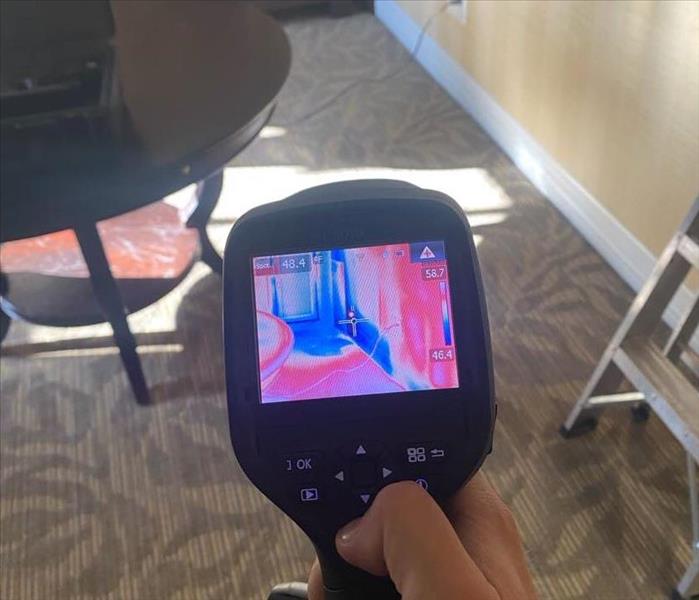Mold in Carpets: How to Remove and Prevent It
3/13/2024 (Permalink)
 Mold found in carpets can result in unpleasant odors and discoloration. In this blog, we will explore tips and steps for removing and preventing mold.
Mold found in carpets can result in unpleasant odors and discoloration. In this blog, we will explore tips and steps for removing and preventing mold.
Carpets are an attractive and comfortable flooring option, but they can also be susceptible to mold growth. Mold damage to carpets can occur due to various reasons, such as exposure to moisture, spills, and leaks. Mold found in carpets can result in unpleasant odors, discoloration, and even damage to the fibers. In this blog, we will explore tips and steps for removing and preventing mold in carpets.
Identifying the Mold in Carpets
Mold damage to carpets can be hard to detect, especially in the early stages. Some signs of mold in carpets include:
- Musty odors
- Discoloration of the carpet fibers
- Stains or discoloration on the carpet backing
- Water damage or stains on the walls or ceiling near the carpet
- The presence of mold or moisture elsewhere in the room or home
Steps for Removing Mold from Carpets
If you suspect mold damage in your carpets, it is crucial to address it promptly to prevent further contamination. Here are the recommended steps for removing mold from carpets:
- Personal Protective Equipment: Wear proper personal protective equipment, such as gloves and a respirator, during the mold remediation process.
- Isolation of the Affected Area: Isolate the affected area to prevent the spread of mold spores. Close off the area to other parts of the house and use plastic sheeting to create a barrier.
- Remove Any Excess Water: Dry the carpet as quickly as possible to prevent further mold growth. Remove any excess water using a wet/dry vacuum or absorbent towels.
- Apply Mold Cleaning Agent: Apply a mold cleaning agent to the carpet using a spray bottle or fogging machine. Allow the cleaning agent to sit for the recommended amount of time.
- Clean the Carpet: Clean the carpet thoroughly using a hot water extractor or steam cleaner. Ensure that all cleaning solution and moisture have been extracted from the carpet.
- Dispose of Any Contaminated Items: If any items, such as padding or carpeting, are too contaminated or damaged to be salvaged, dispose of them properly.
Tips for Preventing Mold in Carpets
Prevention is key to avoiding mold damage to carpets. Here are some tips to prevent mold growth in your carpets:
- Address Water Damage Promptly: If any water damage occurs, address it promptly to prevent excess moisture buildup and mold growth.
- Maintain Proper Ventilation in Your Home: Proper ventilation helps with moisture control, reducing the risk of mold growth.
- Use a Dehumidifier: Use a dehumidifier to reduce excess moisture in the air and maintain an optimal humidity level of around 50 percent.
- Clean and Dry Spills Promptly: Clean up any spills promptly to prevent them from seeping into the carpet fibers and creating a moisture source for mold growth.
- Regularly Clean Your Carpets: Regular carpet cleaning helps remove any dirt and moisture that can contribute to mold growth and prolongs the life of your carpet.
- Have Your Carpets Inspected and Cleaned Professionally: Regular professional inspection and cleaning help identify any potential mold issues and address them promptly before they escalate.
Mold damage in carpets can be unpleasant and harmful if left unaddressed. Identifying the mold, prompt removal, and prevention are crucial steps to keeping your carpets clean and mold-free. Follow the tips and recommendations provided above to remove mold damage from carpets and prevent future contamination. Consider seeking the services of a professional mold remediation team if the mold damage is extensive or if you are unsure of how to handle the remediation process. By taking these steps, you can ensure a mold-free and healthy living environment.




 24/7 Emergency Service
24/7 Emergency Service